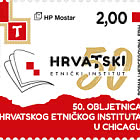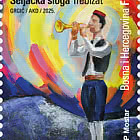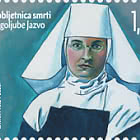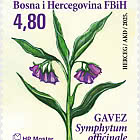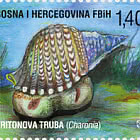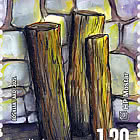Architecture
With the arrival of the Austro-Hungarian authority in Bosnia and Herzegovina in 1878, Mostar experienced urban development. The first professional builders appeared who brought with them knowledge from developed European cities. They created a new urban structure and turned Mostar into a city that did not lag behind other central European cities at the turn of the 19th into the 20th century.
In 1897 the Rondo was built, today the Square of the Croatian Greats (Trg hrvatskih velikana), the traffic centre of the city, from which 6 streets extend like rays from the circular surface of the square. In one of them, called Stephanie Alee (Štefanijino šetalište), construction entrepreneur Eduard Fessler built a neo-baroque style villa in the same year. This one-storey villa is rich in decorative elements, and its likable architectural ensemble fits perfectly into the then newly renovated square. Today it houses the seat of the Rectorate of the University of Mostar.
The same street also houses the building of today's Mostar Gymnasium (secondary school building), which is considered the most representative public building built in Mostar during the Austro-Hungarian administration. The layout of the building is a three-part composition, and was built in compliance with all the European construction standards of the time. Particularly striking is the picturesque neo-Moorish facade decoration. The Gymnasium was built from 1897 to 1902 based on the project of architect Franz Blažek. (Željka Šaravanja)
Bosnia and Herzegovina - Mostar - Recommended stamp issues
WOPA+ recommended stamp issues
| Avatar - Fire and Ash |
| Issued: 03.12.2025 |
| ›New Zealand |
| 50th Anniversary of the Founding of the 24th November Bar Scout |
| Issued: 24.11.2025 |
| ›Montenegro |
| Krisjanis Valdemars |
| Issued: 02.12.2025 |
| ›Latvia |
| Sign Language - Good |
| Issued: 02.12.2025 |
| ›Bosnia and Herzegovina - Republic of Srpska |
| In Memory of the Fallen and Murdered on October 7, 2023 |
| Issued: 08.10.2025 |
| ›Israel |
| Annual Collection Folder (New York) |
| Issued: 05.12.2025 |
| ›United Nations |
| Year Set |
| Issued: 24.11.2025 |
| ›Isle of Man |
| Shipping in the 17th and 18th Centuries - Peat Shipping |
| Issued: 05.12.2025 |
| ›Netherlands |










